
Advertisement

 |
Advertisement
|
 |
If you fly from Lima to the south-east and after landing in Cusco - the tourist capital of the Southern America, you remain in the plane and continue your trip further to the east, first you will see the snow-capped tops of the Andes that will smartly flash behind the multilayer clouds. Then under the wing of the plane the green sea of the Amazon selva will sing its song. When approaching the town of Puerto Maldonado, once again for a couple of seconds, you will tear yourself from the book or monitor of your favorite toy, look at the window and you will see approximately such a picture: 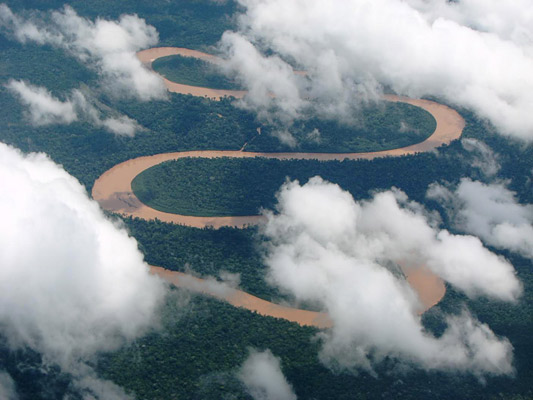
It is the Tambopata river – at the language of local Indians - «speaking water», a little bit lower – flowing into one of the greatest tributaries of Amazon - Madre de Dios. Humid tropical forest of America – selva – occupies more than half of the territory of Peru and is the least populated and investigated part of the country. Indefatigable paganellis have already discovered about fifteen hundred of species of butterflies, and as for the diversity of birds, fish and orchids these regions have no match in the world. We were travelling about Peru in an excellent Latvian-Russian-Czech company having escaped from awful tourist operators from Lima who tried to turn our expedition into a series of excursions and having relied on the word and imagination of our Peruvian friends, set out for a search of non-gala and informal encounters with their motherland. Having come to Puerto Maldonado, we left all valuable and heavy luggage in the office and with light knapsacks stuffed with repellents, torches, batteries and other so worthy in the selva items, set out for a trip. For the first hour along the almost absent road to a little moorage, from where we started for a long voyage up the Tambopata river. In the midday Tambopata looks like that: 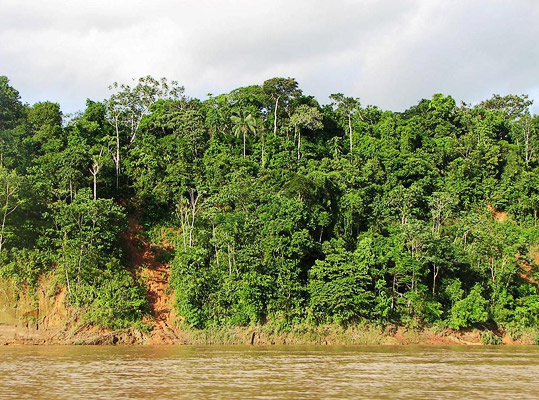
And closer to the evening it looks like that: 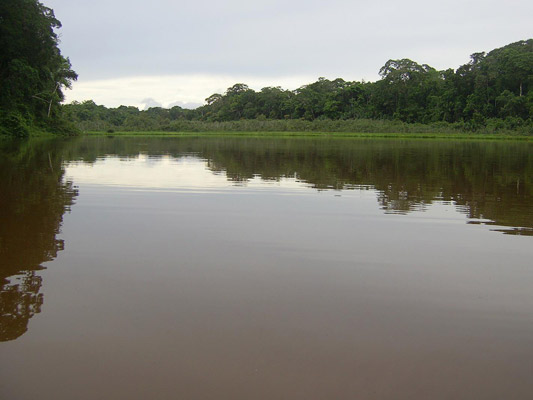
Different birds from the zoo flew over the river, the shores of which resemble a continuous greenhouse. Here there are several species of macaw parrots – locally called «guacamayos». Here is the portrait of one of them: 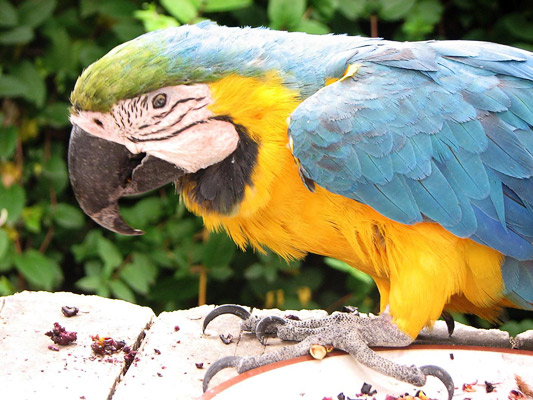
And here is another one: 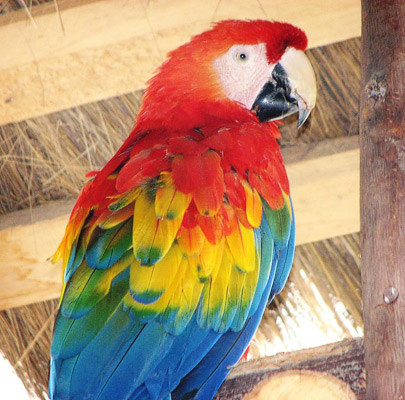
A family of the largest in the world rodents - Capybara - pastured at the shore. Here they are: 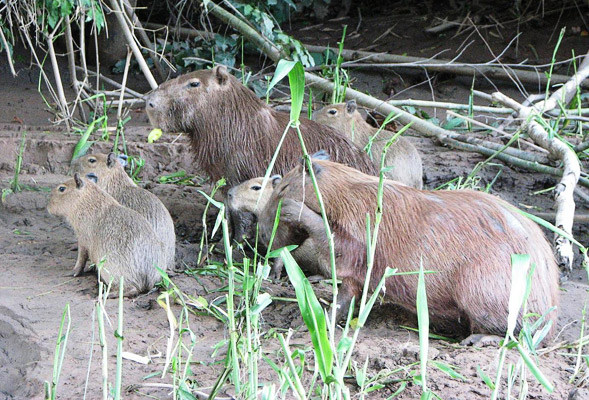
But after that photo (and a couple of hours in the local humid-evergreen climate) my camera started blinking by functions, gave a cheep and died down. Hot humid air of the selva turned out to be incompatible with its electronic mind. That is why all the consecutive photos of that part of Peru were made by a simple hand-held camera, begged from kind natives. So we put on high boots, slip on plastic poncho to get protected from rain, take machete in hands and begin educational trip around its environs. In the darkness of selva all colours are bright and fungi of all colours and sizes emerge from the dying trees: 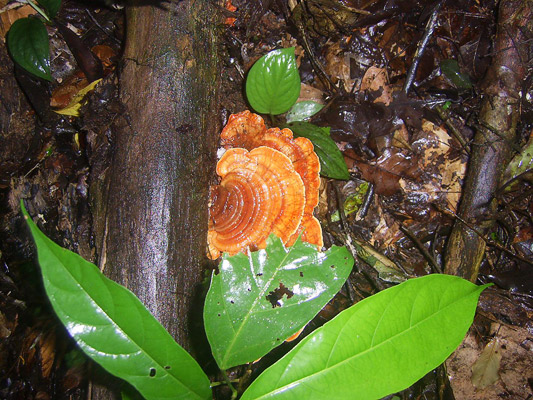
There are boa-trees that embrace in the eternal hug the trunks of other trees: 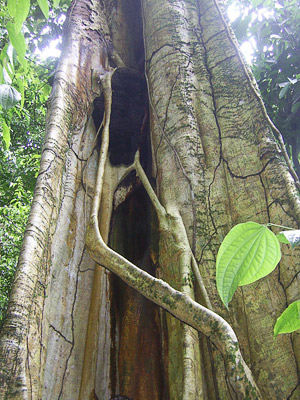
Juices and flesh of the trunk that got inside, become their support and food. And then new layers of parasites cover them in their turn. The Amazon nest-dolls? 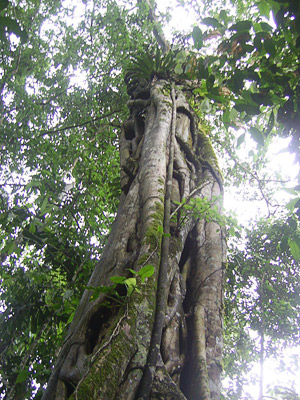
For some reasons this tree is called an «erotic palm-tree»: 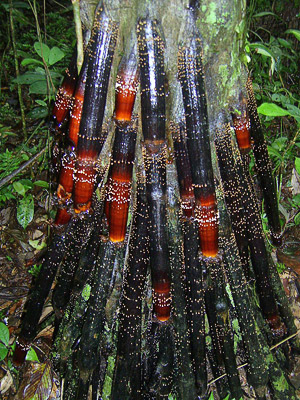
And nearby grows the «pregnant palm-tree»: 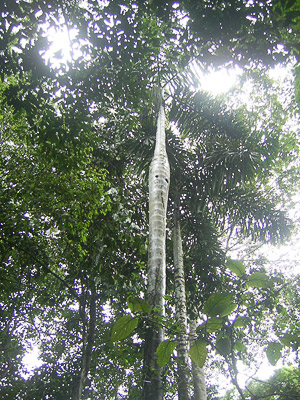
And such trunks are used by Indians as graters: 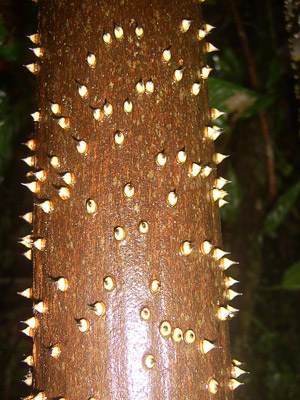
Red material at the foot of this tree is not a clay, but picturesque excrements of working on it termites: 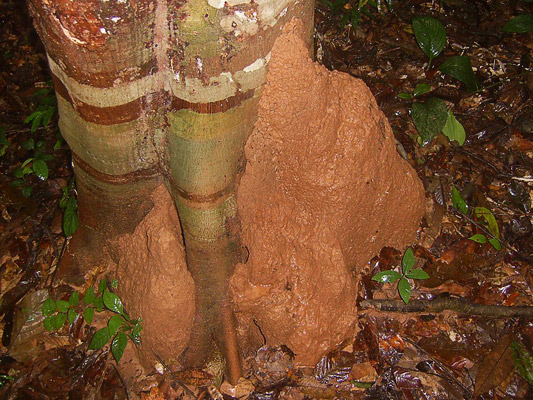
Termite houses can be of this colour: 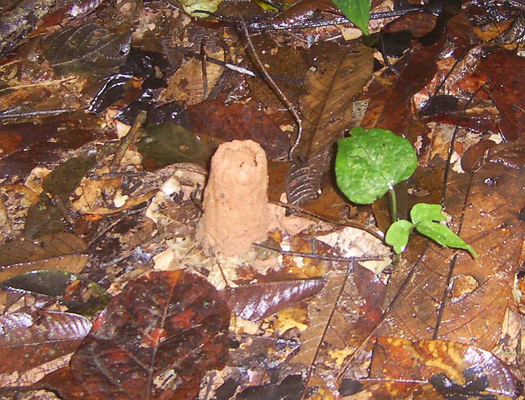
Or that – everything depends on the soil: 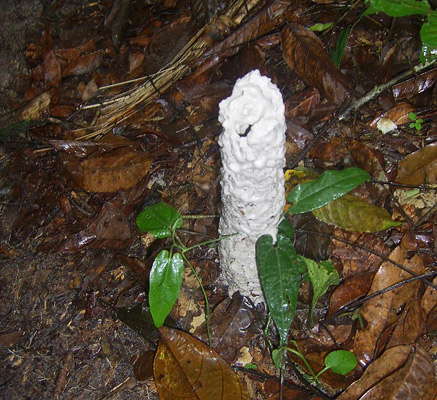
A wolf spider (tarantula) lives in the nearby burrow; the stick of a trainer invited it to pose: 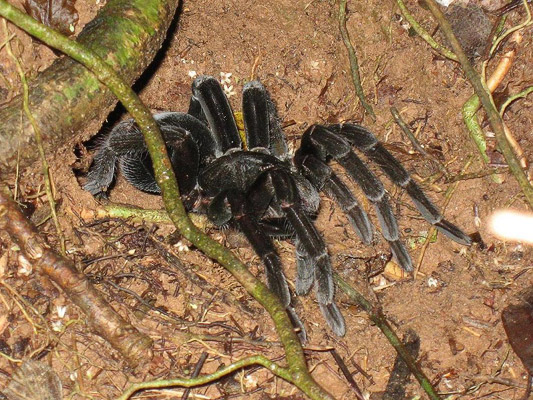
The rain is getting stronger, there is a tide in the road pools, all selva is slowly going under water, but there is no stopping us: 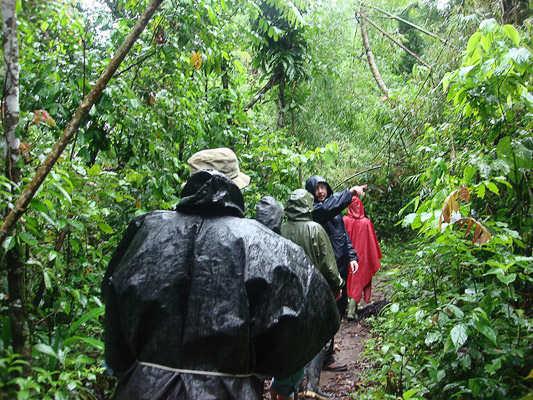
So we go like that: 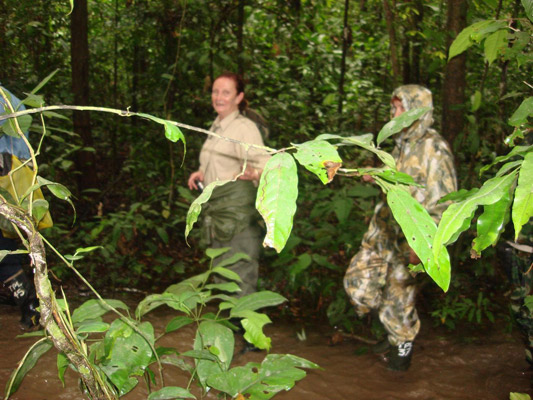
And even like this: 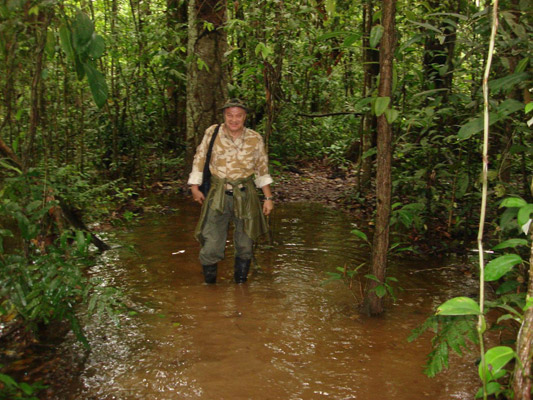
An obstacle in the form of a meter-long snake creeps out on our way. Judging by the strength of the squeal of our lady-guide while trying to take a close-up picture (of the snake, not the guide) I get the idea about special venomousness of the former. The name of the viper is jergon and it is responsible for about 90% of those bitten Peruvians and guests of the Inca country. They did not let me come closer, that is why the picture is not sharp. But as the old Peruvian wisdom says – absence of sharpness of one picture is better than absence of all the rest: 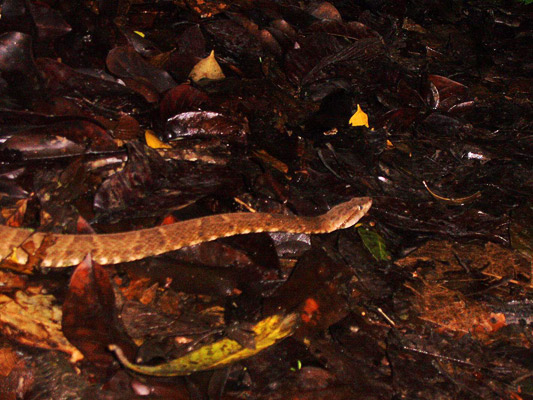
Safely quitting the notorious flora and fauna, we sail down the Tambopata river in such a boat: 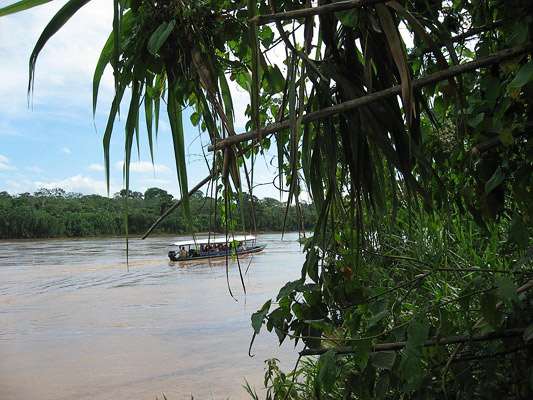
They grow banana at the won over from selva «cultured» pieces of land: 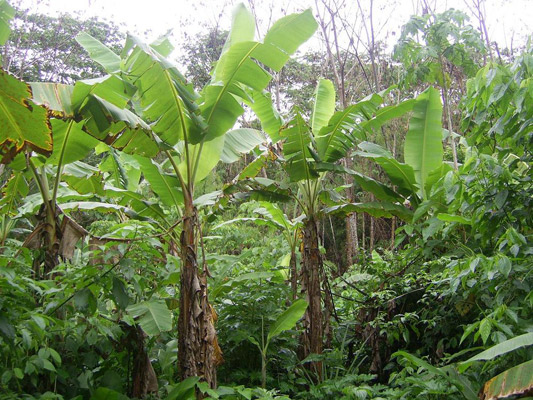
And pineapples as well: 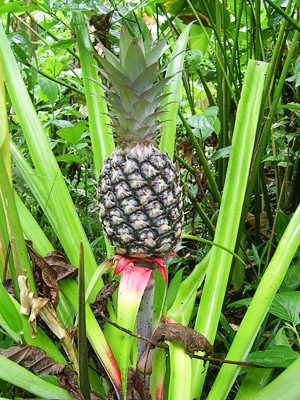
And when it grows dark, we return to the boat and go caimanearing (literal translation of the local verb caimanear), that is look for caymans. Here there are two types – white and black one. White caymans are not big, the size is up to one meter, and all the caimanearing tourists got used to catch and fondle them. Black cayman can grow up to 6 meters, and they are very rare here. That is why meeting with a five-feet cayman can be attributed to the unquestionable success of our expedition: 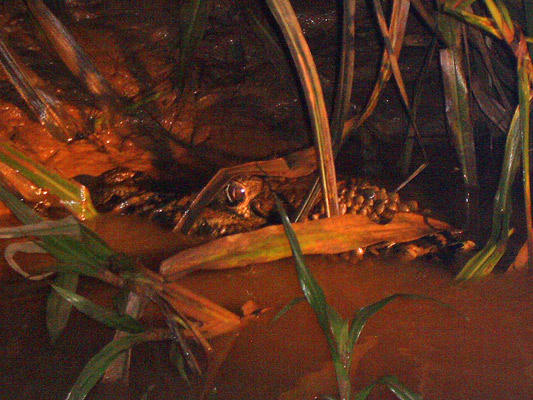
|